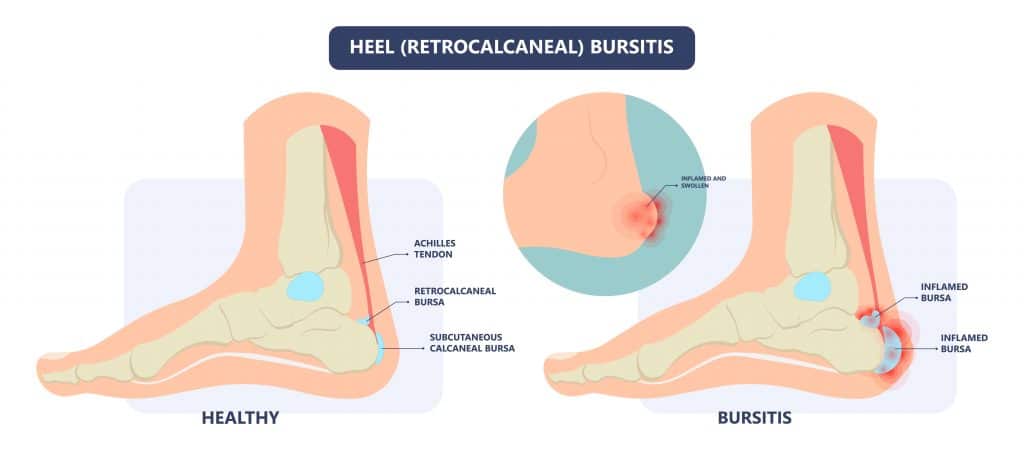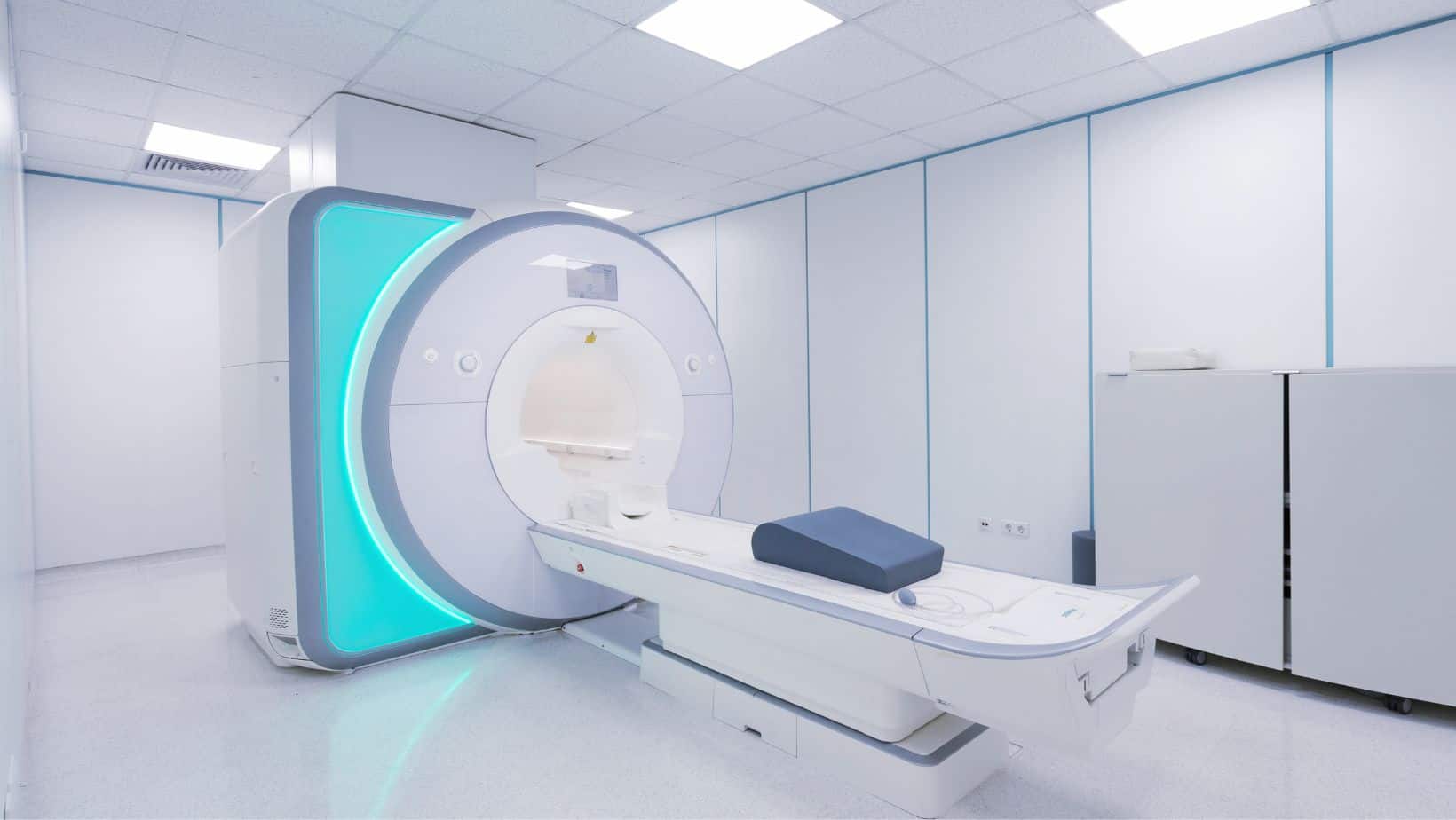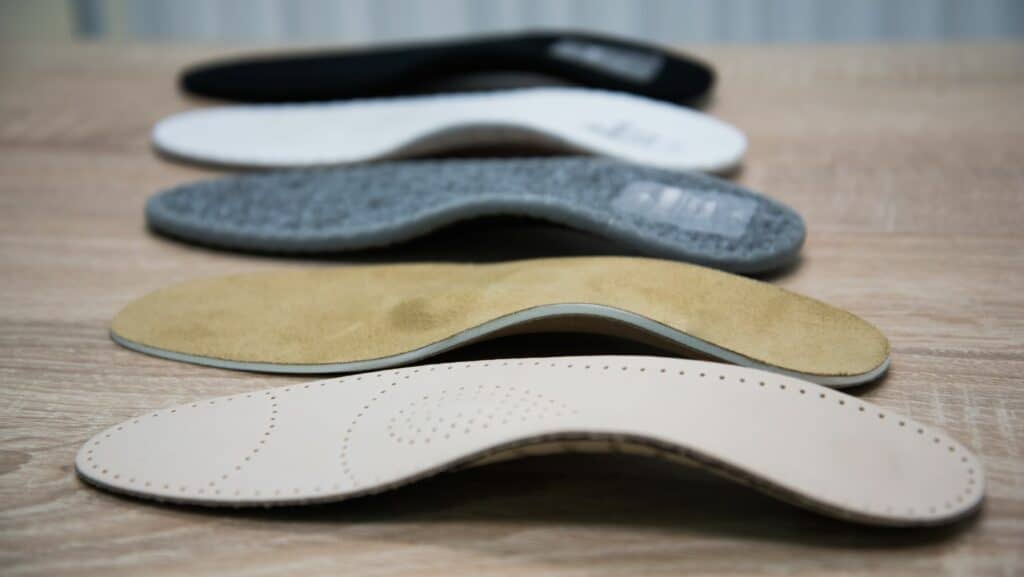Plantar Fascia Tear
Read More >
Bursitis of the ankle is an inflammatory condition that affects the bursa at the back of the ankle. The ankle joint comprises 4 bones: the Talus, Calcaneus (Heel Bone), Tibia and Fibula. The bones have attachments from various ligaments and tendons to enable movement and function of the ankle joint.
A crucial element of the ankle joint is tiny sacs filled with fluid called bursa. The function of these bursa are to act as cushions between the bone and tendons, ligaments and skin. They assist in absorbing shock during movements and acting as a shock absorber.
There are 3 of these bursae on the ankle joint:
The retrocalcaneal bursa: between the Achilles Tendon and the heel bone (calcaneus)
The subcutaneous calcaneus bursa: under the skin at the back of the heel.
The subcutaneous bursa of the Medial Malleolus: positioned on the bony protrudance on the inner ankle.
If one or more bursa becomes irritated or compressed, they become inflamed, resulting in ankle bursitis.

The symptoms of Ankle Bursitis include pain and swelling at the back of the ankle that is exquisitely tender to the touch. Symptoms differ from Insertional Achilles Tendinopathy in that there is rarely morning stiffness, and pain does not improve with increased activity.
Patients report being unable to put on their shoes as the pressure of the heel cup is too painful, so wearing a shoe or sandal without a heel can ease bursitis symptoms.
Patients may be unable to bear full weight due to the severity of the pain, particularly for retrocalcaneal bursitis, as it becomes compressed by the Achilles Tendon in dorsiflexion.
Symptoms are aggravated by walking uphill, walking up stairs or impact activity such as running or jumping.

The most common cause of Ankle Bursitis is a direct impact on the heel bone, resulting from a kick in a sport or an impact from a hockey stick.
Retrocalcaneal Bursitis is often associated with Achilles Tendonitis or Insertional Achilles Tendonitis, although we are unsure if this is a direct cause of Ankle Bursitis.
Repetitive overuse of the ankle joint or a sudden increase in use can cause Ankle Bursitis from activities such as walking, hiking, running or jumping.
Other causes of Ankle Bursitis include Gout, Arthritis, infection and tightly fitted shoes.
A clinician, such as a Physical Therapist of a Podiatrist, can diagnose Ankle Bursitis based on a Physical examination. If the clinician is unsure of the diagnosis or would like to rule out other conditions, they may refer for a scan.
An Ultrasound scan is a cost-effective method of identifying Ankle Bursitis and can rule out other conditions, such as Insertional Achilles Tendonitis.
An MRI may be requested for a more detailed scan, while an x-ray is not a recommended tool for diagnosing Ankle Bursitis.

Ankle Bursitis is primarily an inflammatory condition, so the first treatment steps are to reduce inflammation through icing, anti-inflammatories, rest and avoiding compression of the bursa.
Physical Therapy is an excellent solution once the acute pain of Ankle Bursitis has reduced. A physical examination can identify muscular imbalances that can cause an overload of the bursa, while a gait analysis can identify biomechanical faults that can also contribute to an overload.
A thorough rehabilitation protocol consisting of strengthening exercises, stretches, balance exercises alongside insoles and recommended footwear is an effective treatment.
In some cases, steroid injection under ultrasound guidance is required to reduce inflammation levels of the bursa, but there is a risk of infection.
Surgery is required to remove the bursa in rare cases, while if it is an infection causing your ankle bursitis, then antibiotics may be prescribed.

This is not medical advice, and we recommend a consultation with a medical professional such as James McCormack if you have heel pain. James offers Online Physiotherapy Appointments weekly